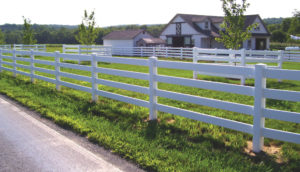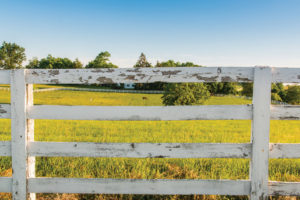Then and Now: Horse Fencing
October 8, 2018VINYL HORSE FENCES—THEN
Way back when, in colonial times, whitewashed wood board rail fencing was the traditional choice for agricultural and other utilitarian purposes. It became known as “horse fencing” because it was ideal for keeping horses corralled. Because the fences were made of wood, they became a major spring project as miles upon miles of fencing needed to be repaired and repainted each year.
Eventually, vinyl rail fencing emerged that could offer the same clean, whitewashed appearance with low maintenance needs. As vinyl fences began to prove their value to farmers, ranchers, and homeowners, they paved the way for the creation of other vinyl outdoor products.
 VINYL HORSE FENCES—NOW
VINYL HORSE FENCES—NOW
Today, vinyl rail fencing comes in a variety of colors. It’s simple to install and constructed using 5’ x 5’ posts that are secured to the ground with concrete. The posts have routed holes to receive the 1.5” x 5.5” or 2” x 6” rails, which have tabs to prevent them from becoming disconnected from the posts. Gates can be built off-square to accommodate rolling terrain.
Vinyl rail fences primary uses include:
• Containing farm animals (except for cattle, which might break the fence)
• Marking property boundaries
• Providing foot-traffic guidance
• Marking barriers around shallow ponds and other minimal-risk property features
